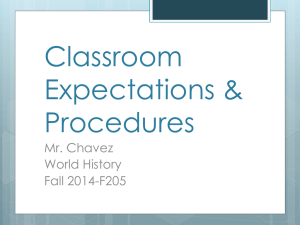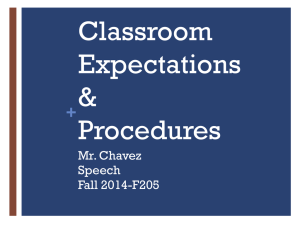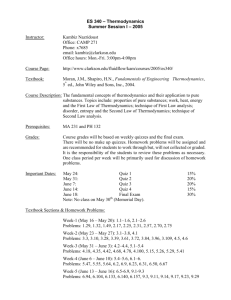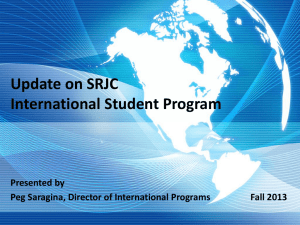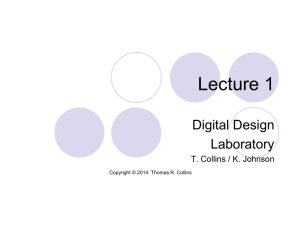41 Course Syllabus
advertisement
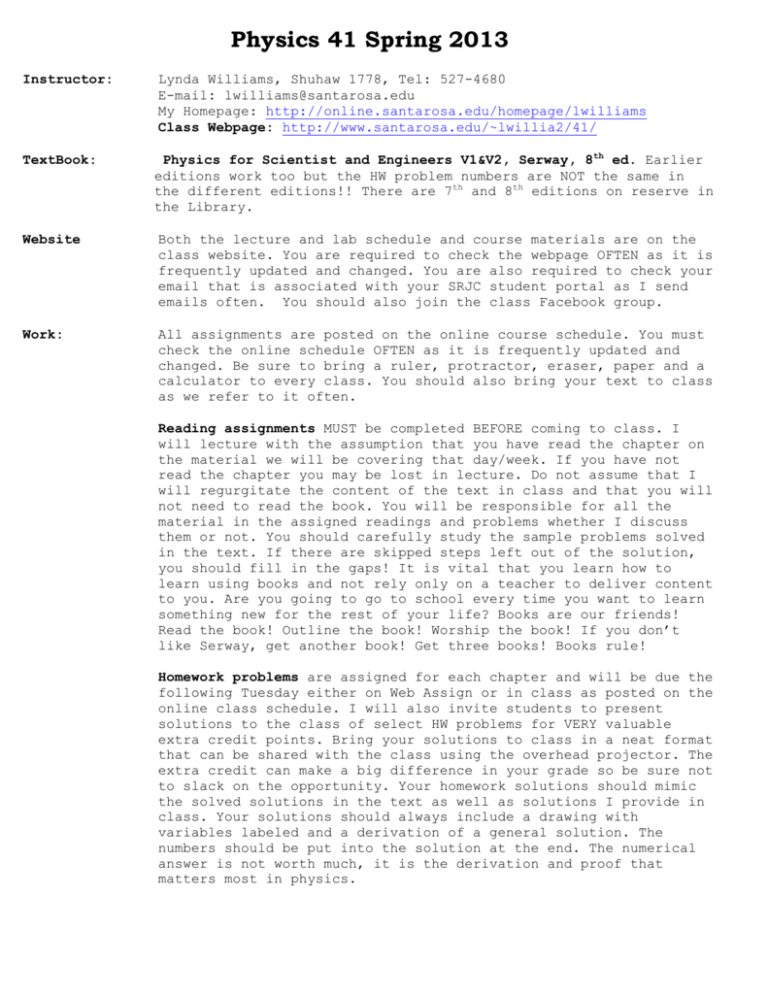
Physics 41 Spring 2013 Instructor: Lynda Williams, Shuhaw 1778, Tel: 527-4680 E-mail: lwilliams@santarosa.edu My Homepage: http://online.santarosa.edu/homepage/lwilliams Class Webpage: http://www.santarosa.edu/~lwillia2/41/ TextBook: Physics for Scientist and Engineers V1&V2, Serway, 8th ed. Earlier editions work too but the HW problem numbers are NOT the same in the different editions!! There are 7th and 8th editions on reserve in the Library. Website Both the lecture and lab schedule and course materials are on the class website. You are required to check the webpage OFTEN as it is frequently updated and changed. You are also required to check your email that is associated with your SRJC student portal as I send emails often. You should also join the class Facebook group. Work: All assignments are posted on the online course schedule. You must check the online schedule OFTEN as it is frequently updated and changed. Be sure to bring a ruler, protractor, eraser, paper and a calculator to every class. You should also bring your text to class as we refer to it often. Reading assignments MUST be completed BEFORE coming to class. I will lecture with the assumption that you have read the chapter on the material we will be covering that day/week. If you have not read the chapter you may be lost in lecture. Do not assume that I will regurgitate the content of the text in class and that you will not need to read the book. You will be responsible for all the material in the assigned readings and problems whether I discuss them or not. You should carefully study the sample problems solved in the text. If there are skipped steps left out of the solution, you should fill in the gaps! It is vital that you learn how to learn using books and not rely only on a teacher to deliver content to you. Are you going to go to school every time you want to learn something new for the rest of your life? Books are our friends! Read the book! Outline the book! Worship the book! If you don’t like Serway, get another book! Get three books! Books rule! Homework problems are assigned for each chapter and will be due the following Tuesday either on Web Assign or in class as posted on the online class schedule. I will also invite students to present solutions to the class of select HW problems for VERY valuable extra credit points. Bring your solutions to class in a neat format that can be shared with the class using the overhead projector. The extra credit can make a big difference in your grade so be sure not to slack on the opportunity. Your homework solutions should mimic the solved solutions in the text as well as solutions I provide in class. Your solutions should always include a drawing with variables labeled and a derivation of a general solution. The numbers should be put into the solution at the end. The numerical answer is not worth much, it is the derivation and proof that matters most in physics. The student solution manual has decent solutions but BEWARE of the teacher’s solution manual (obtained illegally online) as the solutions are not complete and are often more trouble than they are worth. Solutions to select problems will also be posted in the glass case outside the lab room. You should also study those and compare them to your own work. For long problems on exams, showing or proving your solution is worth 90% of the points. Professional scientists and engineers must be able to communicate their work in writing – and so must you. This is your chance to practice! It is very important for you to practice solving problems NOT knowing the answer for two main reasons: 1. It prepares you for exams where there is no solution manual to refer to; and 2. There is no teacher solution manual in life! Being a scientist requires you to feel comfortable not knowing the answers to the mysteries you are trying to solve, sometimes for a very, very long time. It is vital in your development as a scientist (and a human!)to be able to cope working in the unknown. In order to be a lifelong learner and a successful scientist, you must learn how to learn with books, learn to write well, and to solve problems not knowing the answers. I’ll be repeating these important themes all semester long lest you forget them! In order to succeed in this class, you absolutely MUST read the book and do the homework problems. Most importantly, do not fall behind! Quizzes: Quizzes will be given at the start of class and may cover the homework problems from the previous week and perhaps the reading for the week. There will be no ‘make ups’ for any missed quizzes. ABSOLUTELY NO EXCEPTIONS!!! Exams: There are three mid-term exams and one comprehensive final exam. It is required for you to take every exam in order to pass the class. Each exam may include multiple choice conceptual questions and short problems, and a few “long” problems to be worked out neatly in detail. Be sure to bring a ruler, protractor, eraser and calculator AND SCANTRON to each exam. Scratch paper will be provided to you as well as a formula key, which is posted online. Lab: Lab Schedule and Manual: Read the lab instructions and do the prelab before you come to lab! You are required to read the lab instructions and work out the prelab problems before coming to the lab. You may turn in these problems or there might be a quiz based on it. It is very important that you work the prelab BEFORE lab because it will prepare you for the lab. You cannot make up the quiz or prelab if you are late or if you miss the lab. The prelab/quiz is worth 10% of your lab grade so do the pre-lab work and be on time to class! There is a final comprehensive lab exam so be sure to keep copies of all the labs for you to review for the final. You are not allowed to make up any formal labs. Grades: Homework Quizzes Lab reports Mid-exams Final exam 10% 10% 20% 50% 10% of of of of of the the the the the total total total total total grade grade grade grade grade Final grades will be roughly based on the following total percentages: 90-100: A 80-90: B 70-80: C 60-70: D below 60: F Conduct SRJC Student Rules: You must “Conduct yourself in a manner that encourages mutual respect, honorable behavior, and learning, thereby promoting student success and discouraging academic dishonesty.” Physics is difficult enough without having to combat negative attitudes. Consistent negative behavior toward me, the class or anyone and anything, may result in the loss of participation points and possible disciplinary action. See student conduct rules. Attendance Attendance is required. See Attendance rules in the Student Handbook and School Catalogue below. I may drop you if you miss more than three classes. If you are repeatedly tardy to class, you will lose participation points. If you are late to lab, you will lose lab points. If you are more than 10 minutes late to lab, you will not be permitted to attend. ETC No headphones or cell phones or any food in the class. You may have drinks that have lids. No drinks or food in the lab. Please do not use strong smelly colognes in the class for scent sensitive people. No offense, but I will tell you if you are too smelly. Cheating Don’t do it. See SRJC Student Manual for details. Emergency Evacuation Plan In the event of an emergency during class that requires evacuation of the building, please leave the class immediately, but calmly. Our class will meet in the quad area between Bech, Lark and Shuhaw.to make sure everyone got out of the building safely and to receive further instructions. (If the class is on a second or higher floor, provide clear directions to the stairs). If you are a student with a disability who may need assistance in an evacuation, please see me during my office hours as soon as possible so we can discuss an evacuation plan. Accommodations for Students with Disabilities If you need disability related accommodations for this class, such as a note taker, test taking services, special furniture, etc., please provide the Authorization for Academic Accommodations (AAA letter) from the Disability Resources Department (DRD) to the instructor as soon as possible. You may also speak with the instructor privately during office hours about your accommodations. If you have not received authorization from DRD, it is recommended that you contact them directly. DRD is located in Analy Village on the Santa Rosa campus, and Jacobs Hall on the Petaluma Campus. Student Learning Outcomes: Upon completion of this course, student will be able to: 1. Apply laws of physics to analyze and solve problems related to oscillatory motions, wave propagation and interferences including sound, laws of thermodynamics and geometrical/wave optics. 2. Design and assemble apparatus to measure physical phenomena. 3. Analyze and make meaningful comparison between experiment and theory. 4. Effectively communicate ideas and processes of physics. Objectives: 1. Describe waves and solve problems relating to their properties and propagation in various media. 2. Be able to convert to and from various temperature scales, solve problems related to coefficient of expansion, thermal equilibrium and heat transfer. 3. Use the three laws of thermodynamics and the kinetic theory of gasses to solve problems related to ideal gasses and various heat engines. 4. Explain propagation of light in media including reflection, refraction and dispersion. 5. Explain image formation and draw the ray diagrams for various optical devices including lenses, mirrors, microscopes and telescopes. 6. Explain the formation of interference patterns of light from single slit, double slit, diffraction grating, and thin films. 7. Describe polarization with filters and by reflection. Lab Objectives: 1. Develop and conduct experiments that apply the scientific method and error analysis to explore principles in waves, sound, thermodynamics and optics. 2. Use manual and computerized data collection techniques to measure and analyze parameters related to waves, sound, thermodynamics and optics. 3. Plot, curve fit, and interpret data using a spreadsheet or other analysis tools.
